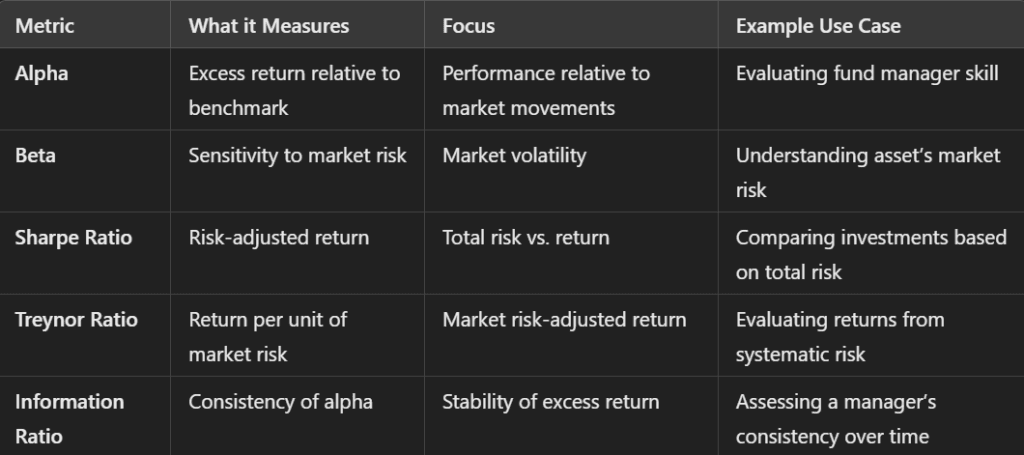Alpha(α) in finance measures the excess return an investment generates compared to a benchmark index, like the S&P 500. It indicates how well an asset or portfolio performs after adjusting for market risk
Table of Contents
What is Alpha in Finance?
In finance, alpha is a measure of an investment’s performance compared to a benchmark index, such as the S&P 500 or Nasdaq. It represents the excess return achieved by an asset, portfolio, or fund manager through active investment strategies, after accounting for market risks. Alpha is thus also often referred to as excess return or the abnormal return in relation to a benchmark, when adjusted for risk.
Alpha is a critical metric in active management, often referred to as the “active return” of an investment. It answers the question: Does the investment outperform the market, and if so, by how much?
Understanding Alpha
Comparison

In simple terms, alpha measures outperformance relative to a benchmark, whereas Treynor, Sharpe, and Beta ratios provide information about the risk assumed to generate those returns. Although alpha is a crucial determinant of whether active management adds value, a more comprehensive picture of an investment’s risk-adjusted performance can be obtained by combining it with these other metrics.
One of the most common is Jensen’s alpha which into consideration the capital asset pricing model (CAPM) market theory and includes a risk-adjusted component in its calculation. Beta (or the beta coefficient) is used in the CAPM, which calculates the expected return of an asset based on its own particular beta and the expected market returns.
Example for Better Understanding
Imagine two funds:
Fund A: Returns 16% in a year.
Fund B: Returns 10% in the same year.
The market benchmark returned 12%, and the risk-free rate is 2%. Assuming both funds have the same beta of 1, the alpha calculation would be:
For Fund A:
For Fund B:
This shows Fund A outperformed the market, while Fund B underperformed.

